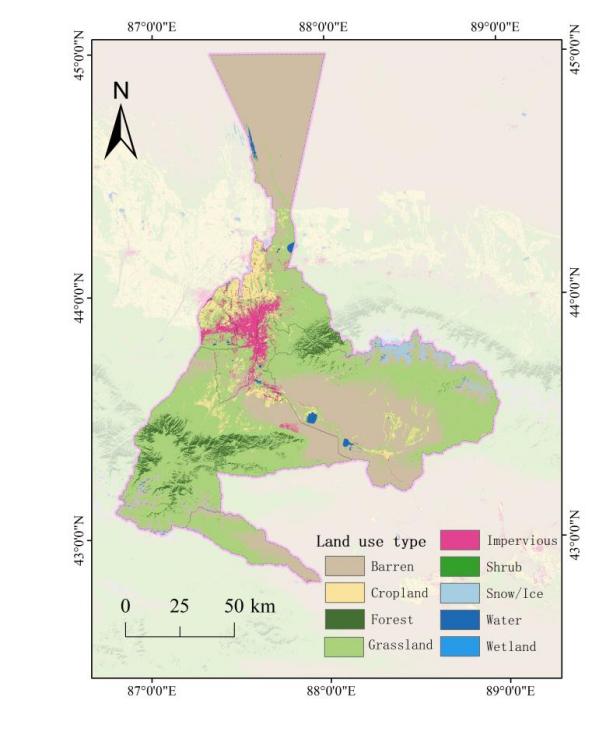Volume 205
Published on November 2025Volume title: Proceedings of CONF-MCEE 2026 Symposium: Geomaterials and Environmental Engineering
As the new energy vehicle sector advances at an accelerated pace, lithium-ion batteries have grown far more prevalent across electric vehicles, energy storage systems, and portable electronic devices. The State of Health (SOH) of lithium batteries bears direct implications for their safety, performance stability, and operational lifespan. For this reason, Prognostics and Health Management (PHM) technology tailored to lithium batteries has steadily become a key area of focus in both academic inquiries and industrial applications. This paper systematically reviews the research progress of lithium battery PHM technology in recent years, mainly covering key methods such as battery thermal state characterization indicators, Physics-Informed Neural Network (PINN), and Integrated Sparse Gaussian Process Regression (SGPR). This paper not only summarized the core principles and applications of each technology, but also analyzed its shortcomings and proposes several improvement directions. This paper provided a reference for future research on SOH prediction and health management of lithium-ion batteries.

 View pdf
View pdf


The escalating climate crisis, driven primarily by the enhanced greenhouse effect, has made carbon dioxide (CO2) a central focus of global scientific and political discourse. As the primary long-lived greenhouse gas emitted from human activities—such as fossil fuel combustion, industrial processes, and deforestation—CO2concentrations in the atmosphere have reached high levels. This rapid accumulation is unequivocally linked to global warming, rising sea levels, and an increased frequency of extreme weather events. While transitioning to renewable energy and enhancing energy efficiency remain crucial mitigation strategies, their progress has been insufficient to meet international climate targets. Consequently, Carbon Capture, Utilization, and Storage (CCUS) technologies have emerged as an essential complementary approach to directly reduce atmospheric CO2and achieve net-zero emissions. Through a comprehensive literature review, this paper examines the principles, efficiency, energy consumption, and economic feasibility of major CCUS approaches, including physical adsorption, chemical absorption, membrane separation, and biological fixation. The analysis reveals that each method possesses distinct advantages and limitations. For instance, chemical absorption is well-established but energy-intensive, while biological processes are eco-friendly yet limited by scalability and slow kinetics. Future advancements should focus on material innovation, process integration, and energy optimization to enhance capture efficiency, reduce costs, and ensure operational safety. This study offers a comparative perspective to support the selection and development of CCUS technologies, contributing to carbon neutrality goals and sustainable energy transitions.

 View pdf
View pdf


Currently, solar and wind energy can only be served as auxiliary propulsion in container ships, which are difficult to replace the main propulsion. Thus, hydrogen power systems have become one of the key directions for zero-carbon shipping, depending on their zero-carbon potential and efficiency advantages. This paper focuses on the application of hydrogen power systems in container ships, specifically examining their technical principles and hydrogen storage methods. It analyzes challenges including constraints on hydrogen storage volume and weight, insufficient salt spray resistance and durability of PEMFC, complex system integration, lagging regulations, and high costs. Additionally, it summarizes the rules of technical application by integrating industry demonstration practices. Due to green hydrogen production, the full-chain low-carbon benefits of these systems and their compatibility with IMO regulations are significant. However, key issues such as the optimization of hydrogen storage technology and the improvement of fuel cell environmental adaptability remain to be addressed. Based on industrial planning forecasts, it is highly likely that the commercialization of hydrogen energy in inland and coastal short-to-medium-distance container ships will be realized within the next decade, while ocean-going ships will require major breakthroughs in areas such as hydrogen storage energy density. This paper can provide references for clarifying the R&D direction of hydrogen-powered ship technologies, constructing policy support systems, and promoting industrial chain collaboration. They will help the shipping industry align with IMO emission reduction targets and advance zero-carbon shipping from the demonstration stage to large-scale commercial application.

 View pdf
View pdf



Marine microplastics have become a major challenge to the global marine environment because of their persistence and widespread distribution. Polyethylene (PE) and polyethylene terephthalate (PET), as the two most widely used and frequently detected polymers, exhibit markedly different biodegradation potentials due to their distinct chemical properties. This review systematically summarizes the microbial degradation mechanisms of PE and PET, including surface biofilm formation, key enzymatic reactions, aerobic and anaerobic metabolic pathways, and the synergistic effects of abiotic weathering with biological processes. Building on this, the review further analyzes how marine environmental factors—temperature, pressure, light, oxygen, salinity, and nutrient supply—affect microbial degradation efficiency, with a particular focus on the contrasts between shallow and deep-sea systems. The findings indicate that temperature and oxygen availability are the primary limiting factors for plastic degradation in deep-sea environments, while high pressure, nutrient scarcity, and lack of light further constrain microbial metabolic activity. By integrating current research, this review highlights the central role of environmental drivers in shaping microplastic degradation, providing a theoretical foundation to better understand and enhance microbial degradation in marine ecosystems.

 View pdf
View pdf



Battery electric vehicles offer zero emissions and higher efficiency.This paper presented a cradle-to-grave LCA on SAE Level 0–5 automated BEVs and found the optimal automation level to reduce carbon was, surprisingly, only at SAE Level 4. The environmental costs of sensor and computing hardware were combined with operational efficiency plus/minus factors, using region-specific electrical grid emission factors for North America (0.403 kg CO2/kWh), Europe (0.238 kg CO2/kWh), and China (0.556 kg CO2/kWh). The mass of hardware inventory increased from 0.015 kg (Level 1) to 8.32 kg (Level 5), and operational performance improvements expected varied between 5% and 15% per level. The findings implied that SAE Level 1 attained the largest environmental gains in all regional environments, with CO2savings of between 1.6% and 5.0% relative to manual driving, due to its low-cost hardware needs and moderate efficiency benefits. Level 3 succeeded only—and no better than—under low-carbon electricity (≤0.30 kg CO2/kWh), while Levels 4–5 resulted in larger and increasingly significant GHG emissions per lifecycle associated with hardware scale, which were not offset by operational gains. The results challenged the narrative of the climate benefits of automation and suggested that reductions in emissions from the transportation sector depended less on new technology and more on environmental setting. The paper was the first to systematically analyze potential environmental impacts of AV deployments, thereby enabling policymakers to specialize automation investments toward regional decarbonization targets and operational conditions for desirable sustainable mobility transitions.

 View pdf
View pdf



This paper assesses whether shared e-scooters can address last-mile transport in Australian cities through a comparative case study of Sydney (NSW) and Brisbane (QLD). Using state legislation, municipal bylaws, licensing materials, and relevant literature, it analyses policy and regulation, service scale, public-transport integration, safety and perception, and long-term feasibility. Findings show that governance framing is decisive. In Sydney, short, tightly bounded trials and a ban on private devices limit scale, weaken first/last-mile links, and constrain evidence. In Brisbane, citywide operation under multi-year licences, backed by clear state rules and municipal controls, normalises use and supports iterative, data-led regulation, improving prospects for integration. This contrast highlights how differing legal and administrative approaches can produce distinct outcomes in service availability and public Distributional outcomes hinge on explicit spatial and pricing obligations; without them, access clusters in well-served areas. Station-area coverage targets, standardised data sharing and enforcement, and equitable pricing adapted to local conditions are recommended. The study highlights how legal and regulatory design shapes micromobility outcomes, offering lessons for sustainable urban transport policy.

 View pdf
View pdf


In response to the expectations for carbon neutrality and the demand for energy efficiency in the building sector, zero-energy and nearly zero-energy buildings have become key development pathways. This paper employs a literature review and case study analysis methodology. Based on the national standard GB 50178-93, "Standard for Building Climate Zoning," it investigates the application of passive, active, and renewable energy technologies tailored to the climatic characteristics and energy efficiency needs of five typical building climate zones. It proposes an integrated climate-adaptive technology framework that combines these three elements. The article further identifies current challenges in material performance and costs and offers recommendations. This study provides theoretical references and practical guidance for the deepening and large-scale promotion of energy-saving practices in Chinese architecture.

 View pdf
View pdf



Ecosystem services are fundamental to human survival and development.Assessing urban ecosystem services and implementing zoned management of ecological units can contribute to the improvement of the human living environment.This study establishes an indicator system for ecosystem services from four aspects:provisioning services,regulating services,supporting services and cultural services.The value of ecosystem services for different land use types is calculated using the equivalent value per unit area.The ecosystem service values of eight districts or counties in Urumqi in 2023 are evaluated. We employ spatial autocorrelation analysis to delineate ecological management units at the community level and propose strategies for ecological zoning regulation. The results indicate that: ①The total value of ecosystem services in Urumqi reached 10.595 billion yuan in 2023, exhibiting significant spatial variation. The highest value was 4.18 billion yuan in Urumqi County,while the lowest was 0.188 billion yuan in Tianshan District. ②seven districts and one county in Urumqi were classified into four types of urban ecological management zones:mountain ecological core protection zone, urban construction and development zone,desert ecological prevention and control zone, and ecological-economic transition zone. ③Differentiated management measures are proposed in each zone,demonstrating that effective urban ecological zoning can balance various ecosystem service functions and optimize their benefits.The findings facilitate a comprehensive evaluation of urban ecosystem services in urbanized areas and provide a reference for refined management and differentiated regulation of regional ecological governance.

 View pdf
View pdf


Nanotechnology, as a cutting-edge technology, has demonstrated irreplaceable application value and broad prospects in ensuring food security, promoting the green and sustainable development of agriculture, enhancing the precision of cancer treatment and reducing medical side effects, as well as breaking through the bottlenecks of flexible electronic materials and adapting to new scenarios such as wearable devices. This article takes the core research and development plans and key technological breakthrough activities of nanotechnology in three major fields as the analysis objects, systematically sorts out its research and development priorities and commercial application trends, and focuses on analyzing the practical experience in the risk assessment of nanotechnology in each field . This article systematically reviews the application mechanisms, typical cases and existing challenges of nanotechnology in three major fields. In the agricultural food sector, it focuses on controlled-release nano-pesticides, nano-materials for antibacterial and barrier effects, and nano-sensors for high-sensitivity detection and in the cancer treatment field, it revolves around nano-carriers for targeted delivery, combined treatment for synergy, and integrated diagnosis and treatment. In the flexible electronics field, it elaborates on nano-silver conductive networks, cellulose-based substrates for support, and composite device optimization.

 View pdf
View pdf


The global food industry has experienced significant transformation due to urbanization, lifestyle changes, and the demand for long-shelf-life products. Processed foods, including pre-packaged snacks and refrigerated beverages, rely heavily on food additives, including preservatives, which inhibit microbial growth. However, misinformation and concerns about chemical additives have led to widespread public anxiety, with many consumers associating preservatives with health risks, despite scientific evidence. With the improvement of living standards, people has grown increasingly attentive to everyday food safety, turning the spotlight on various additives—preservatives is just one of them.To foster a proper understanding of food additives, this paper conducts an extensive review of academic literature to summarize the physical and chemical properties, safety, and working principles of four acidic preservatives which are frequently appeared in daily life—sorbic acid, benzoic acid, and propanoic acid along with their respective salts. By presenting these findings, the study aims to make people to recognize, accept, and appreciate the role of food preservatives.

 View pdf
View pdf



